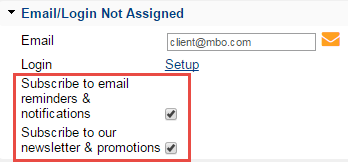Behavior — Making Your Habits Easier
How to Eliminate Excuses Through Design
Micro-Habits
Habits are delicate in their infancy. In the early stages, building a new habit can be completely derailed by missing even one day. To increase our chances of success, we must stack the odds in our favor.
In today’s chapter on Habit Behavior, I’ll outline my techniques for making habits easier so that you will be more likely to complete them consistently. I encourage you to apply these techniques to your own habit creation by completing the exercises as we go along.
In the Habit Loop, the Behavior is the chain of action steps that must be done to complete a habit. Every habit can be broken down into its smaller component steps. I call these sub-steps to complete a habit “micro-habits”.
For example, there are seven micro-habits for “running on a treadmill”.
Put on running shoes
Look at the treadmill
Walk to the treadmill
Step onto the treadmill
Turn on the treadmill
Start walking to warm up
Start running
Notice that each micro-habit is dependent upon the completion of the previous one. For example, we will probably not step on the treadmill if we are wearing hiking boots. We cannot run on the treadmill until we have decided to step onto it and/or turn it on.
Building a habit is like building a steel chain. Just one break in the chain disrupts the entire habit. Our goal is to eliminate any weak links so that we make the strongest chain possible. We call these breaks in the chain “failure modes”.
When we design our habits, we try to anticipate these potential failure modes in advance. Because the cost of an early lapse is so high, we always prefer to simulate our habit setbacks rather than experiencing them directly. By simulating our future, we can change it.
Exercise #1: Micro-Habits
Write out each step necessary to complete your habit, no matter how small.
• • •
Addition by Subtraction
Marketers have found that for each step added in an online checkout process, 50% of customers “drop off” and fail to complete the purchase. Every step matters!
Each micro-habit we eliminate or streamline increases the odds of completing our habit. To maximize consistency, minimize the number of steps needed to complete your habit. We do this by looking at each micro-habit in turn and asking ourselves “Is this step necessary? If so, can it be made easier?”
Completing a habit means making it all the way through our conversion funnel.
Always Auto Opt-In
Eliminate any “in the moment” decision-making. I call this “separating planning from execution”. We want every decision we make during the habit process to be “auto opt-in”.
Visualize a checkout process where the newsletter subscription checkbox is already checked. It is easier to stay subscribed than to decline the subscription. When we can automatically default to “yes”, we eliminate an entire step. When in doubt, start by making sure you always enter the conversion funnel.
This is what we want for our habits.
Ask yourself: if there is a decision that needs to be made, can you make the decision in advance? For example, instead of choosing your workout at the gym, have your workout pre-chosen and written out ahead of time.
It is very important that we make responding to our triggers auto opt-in. Without this initial decision, the habit cannot begin. Responding to our trigger initiates a subtle but powerful verb change. We have gone from “planning to do” the habit to “currently doing” the habit.
The biggest force we must overcome is always our own inertia. In a Newtonian sense, we want to minimize the activation energy required to transform our state from “at rest” to “in motion”. Make starting your habit so easy that you can’t say no.
Remove the temptation to rebel by giving yourself the illusion of choice. Give yourself permission to skip the habit, but make sure the alternative is less desirable than completing the habit. For example, I make boredom my ally by giving myself the option to either write in my journal or do nothing. We can get ourselves to do just about anything if the alternative is starting at the wall.
Exercise #2: Eliminating Steps / Creating Auto Opt-In
What is one micro-habit which you can eliminate or make easier?
How can you auto opt-in your decision to begin your habit?
• • •
Eliminating Excuses Through Design
Even the smallest source of friction can give us an excuse to skip a habit. We can eliminate these excuses by removing this friction ahead of time.
Think of yourself as a habit designer, commissioned to shape your own behavior. What we do tomorrow is an effect of the upstream changes we make today.
How can you redesign your environment to nudge yourself towards better habits?
For example, to be more consistent with meditation, make sure that you will have a quiet, welcoming, and comfortable place to meditate. “My cushion is kinda uncomfortable” seems trivial now but it might be enough friction to provide a plausible excuse.
Our most frequent excuse seems to be “I didn’t have time today”, as if the fault lies elsewhere. The truth is, we never really “have” time. With time, all we have is our intentions on how to use it. Failure to complete a habit is really a failure to follow-through with our previous intentions.
We refer to time as if we can spend it in the same way we spend the money in our bank account.
We eliminate the excuse of “not enough time” by protecting our previous intention to complete the habit. We create a consistent space in our schedule and have a plan in place for contingencies. What steps can you take now to make sure that you will be able to follow-through with your intentions?
Exercise #3: Eliminating Excuses
What is one excuse you have? How can you eliminate it?
How can you make sure you will follow-through with your intentions?
Ideas for #2:
Is there a specific time you can reliably set aside each day?
Can you add extra slack to your schedule in case you are running behind?
Anything you can do beforehand to complete the habit in less time?
Do you have a Plan B in case your normal time is unavailable?
Is there a smaller version of the habit you can do instead?
• • •
Murphyjitsu
Before we wrap, I will share a powerful exercise. Named after Murphy’s Law (“anything that can go wrong, will go wrong”), Murphyjitsu future-proofs your habits by catching any failure modes you might have missed.
I found Murphyjitsu beneficial when troubleshooting my inability to plan my priorities the night before. I discovered that the biggest failure modes were 1) not having my physical planner and 2) having evening plans. I removed these failure modes by 1) always bringing my planner with me and 2) blocking off time earlier in the afternoon if I had plans in the evening. Making these two small changes allowed me to be consistent with this habit for the first time.
Exercise #4: Murphyjitsu
Visualize yourself when you next intend to complete your habit.
Ask yourself, “if I failed to complete this habit, how surprised (0–100%) would I be?” If completely surprised (80%+) you are in good shape. If not that surprised (<80%), your habit design has room for improvement.
If < 80% surprised, spend one minute brainstorming failure modes. Which of these failure modes, if removed, might raise your expected level of surprise the most?
What is one thing you could do to prevent this failure mode?
Return to #1. Did the change from #4 increase your surprise level?
• • •
In this chapter, you learned how to break your habits into a series of sub-steps, or micro-habit as well as techniques to make these steps easier to perform. If you are having a hard time completing your habit, revisit the exercises above to 1) remove unnecessary steps 2) make decisions auto opt-in and 3) eliminate excuses. Use Murphyjitsu to simulate your habits and identify any changes you could make to increase your chances of completion.
In the next chapter, we conclude our examination of the Habit Loop by learning how to create the Rewards which maximally reinforce our habits.





